I can't even stay in a normal forearm plank for a long time!
Oh, so much to learn ?
12 Types of Planks for Each Muscle Group That Can Replace a Gym Membership
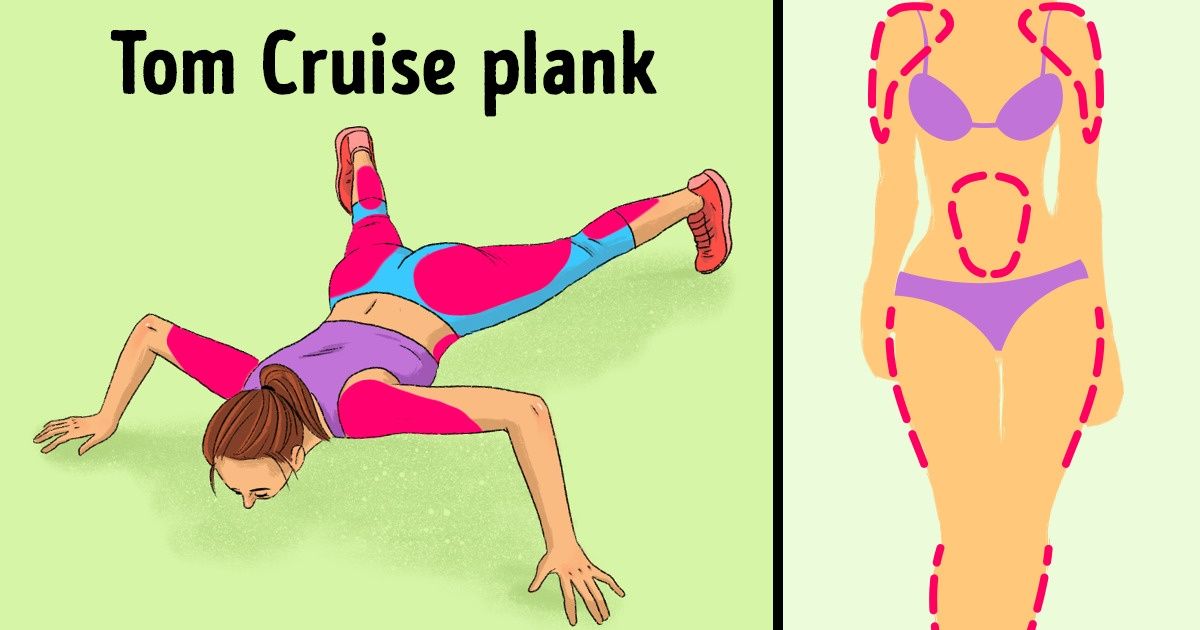
Most of the time, fitness coaches teach the classic variant of planks on elbows or on straight arms. They consider this static exercise to be great for stamina and for improving the abs. But as it turns out, the plank has dozens of variations that can involve almost every part of the body including the back, buttocks, calves, shoulders, and different muscles. The training itself can be very dynamic.
Bright Side has reviewed a bunch of fitness manuals and extracted the most effective kinds of planks that are as useful as possible. You should mix and match the variations depending on how much physical activity you regularly take part in. Do each type for about 15-30 seconds and increase the time gradually to 2 minutes.
1. Plank walk-down
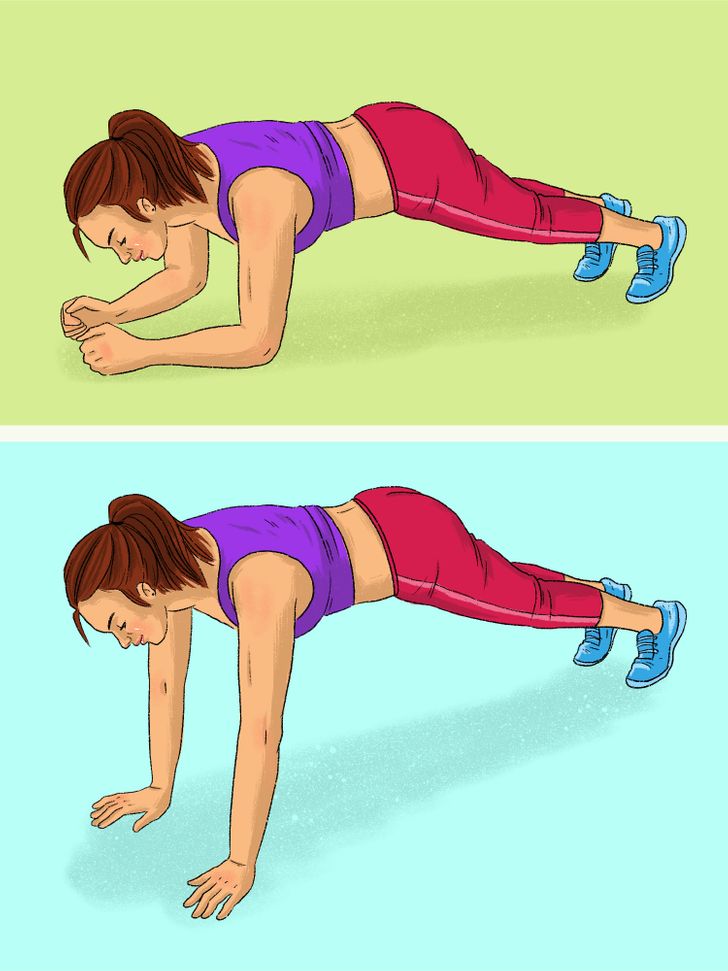
This kind of plank puts your biceps, back muscles, and abs to work.
- The starting position is a plank on the elbows.
- Remove your right hand from the floor and put your palm on where the elbow was (under the shoulder). Do the same with your left hand.
- Move up as much as you can. Return to your starting position.
2. Side plank toe touches
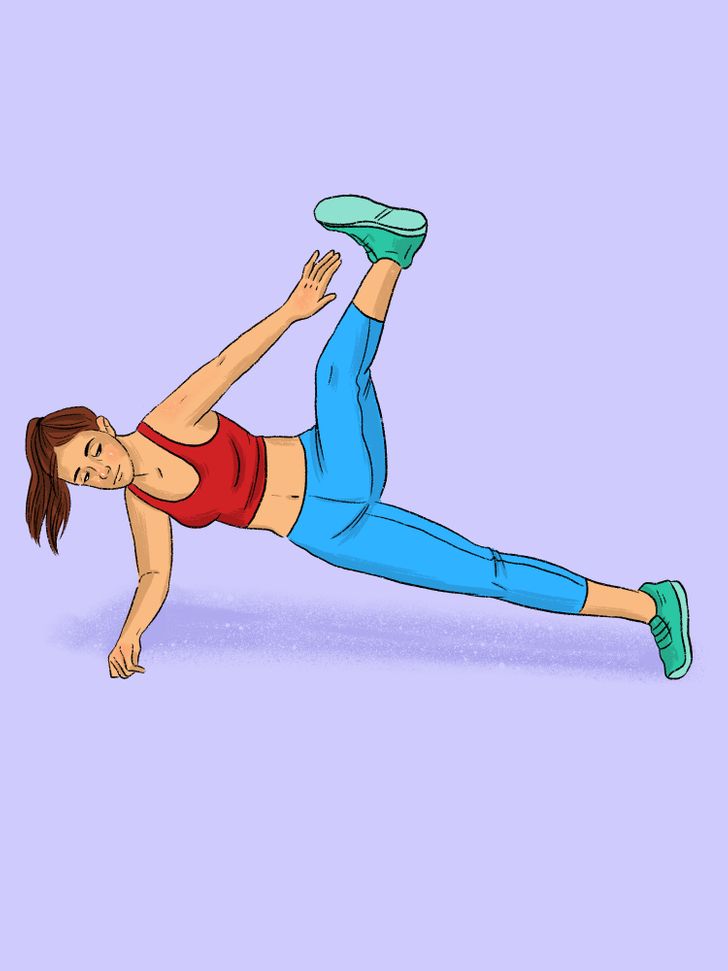
This exercise trains the shoulder and hip muscles.
- The starting position is the side plank on one elbow with the other arm out vertically.
- Move your straight leg up and try to touch your toe. Don’t bend the leg.
3. Side plank knee-to-elbow

Aside from the muscles that worked in the previous exercise, the buttocks come into play here too.
- The side plank is your starting position.
- The upper hand should be moved behind the head so that the elbow is facing up.
- The lower leg’s knee should touch the elbow.
4. Tom Cruise plank
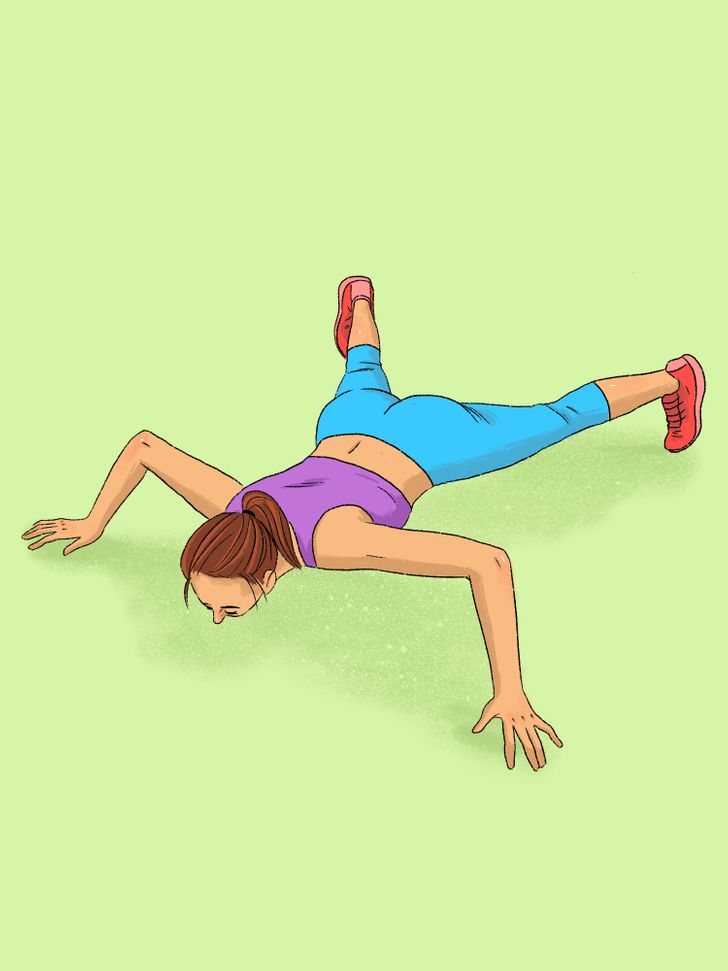
This kind of plank trains the entire body: the forearms and the shoulders, the calves, the hips, and the abs.
- The classic plank is the starting position.
- Slowly move your hands and legs as wide as you can.
- Lower your body as much as you can as if you were soaring above the ground.
5. Walking plank on straight arms
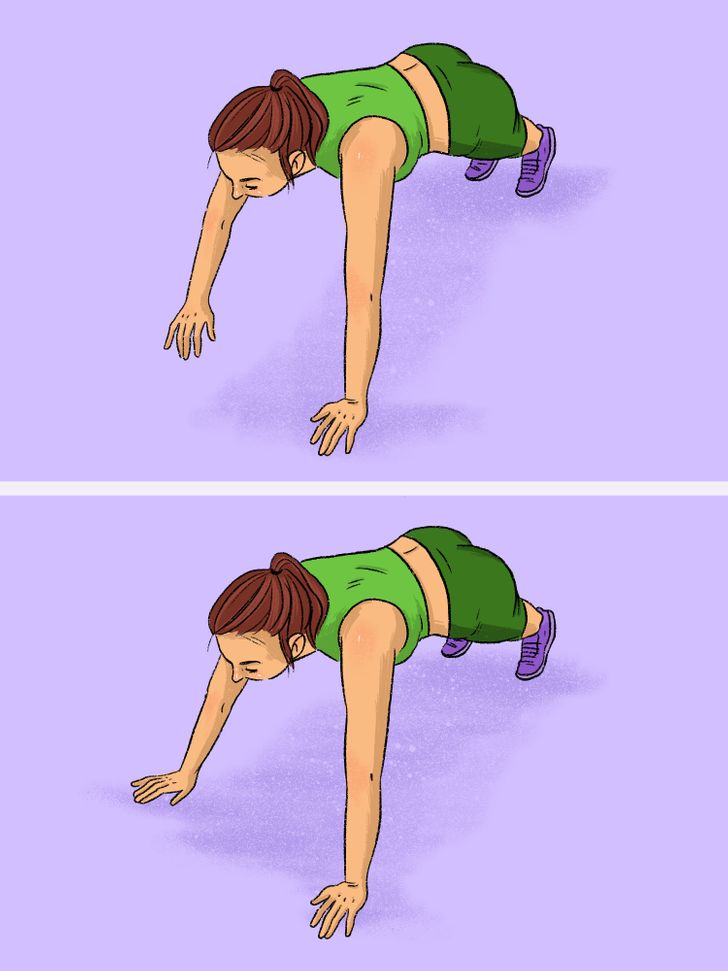
This exercise develops the back muscles and the shoulders.
- The classic plank is the starting position.
- Take one step to the side with one hand and one leg. After that, move the other 2 to the same side.
- Return to the starting position. Control the pelvis: don’t let it move up.
6. Side jumps on straight arms
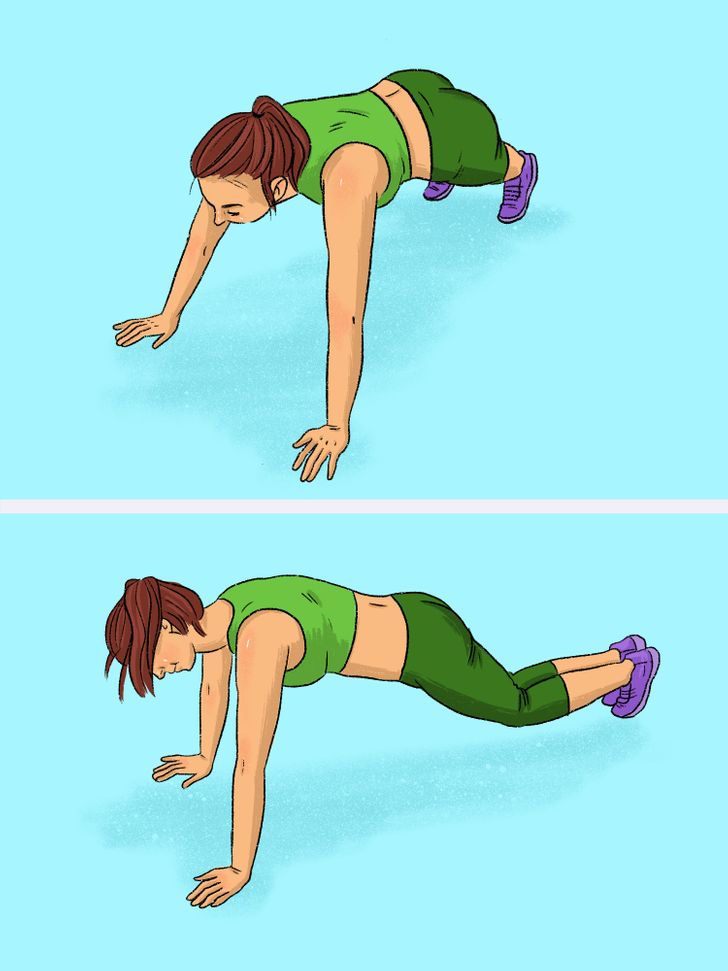
This plank tones the hips, buttocks, and calves, along with the back muscles.
- The starting position is the plank on straight arms or elbows.
- Put your legs together and do jumps from side to side.
7. Plank on one arm
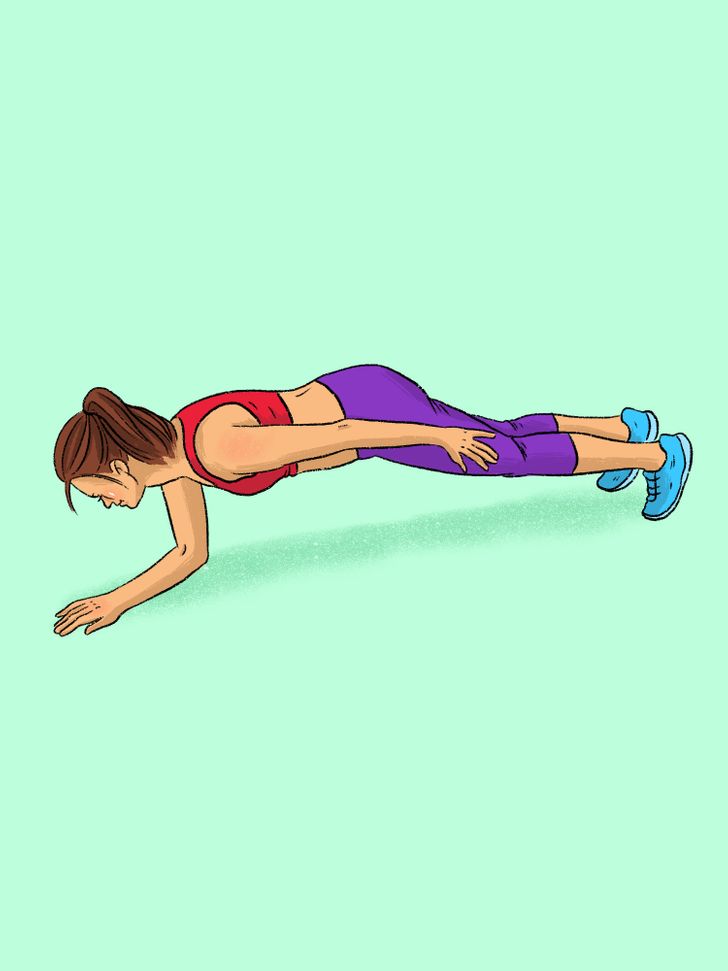
This exercise develops the shoulder muscles.
- The classic elbow plank is your starting position.
- Put your second arm along the body.
- Repeat with the other arm.
8. Side-to-side plank
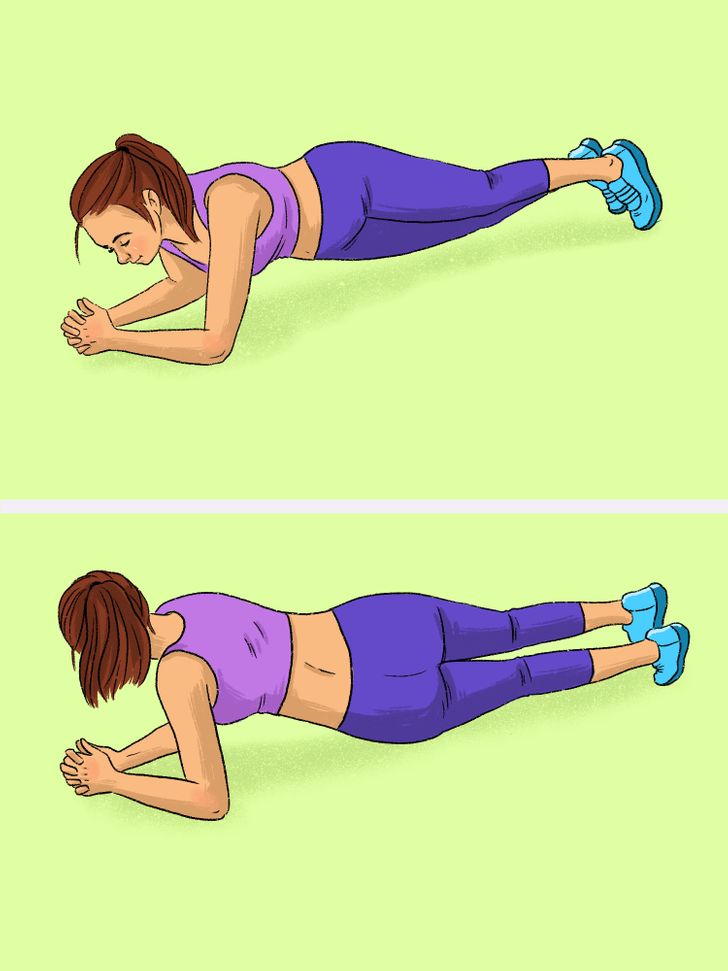
This kind of plank uses the back muscles, buttocks, and hips.
- Start in the classic plank.
- Lean the pelvis so that one hip touches the floor.
9. Lifting legs
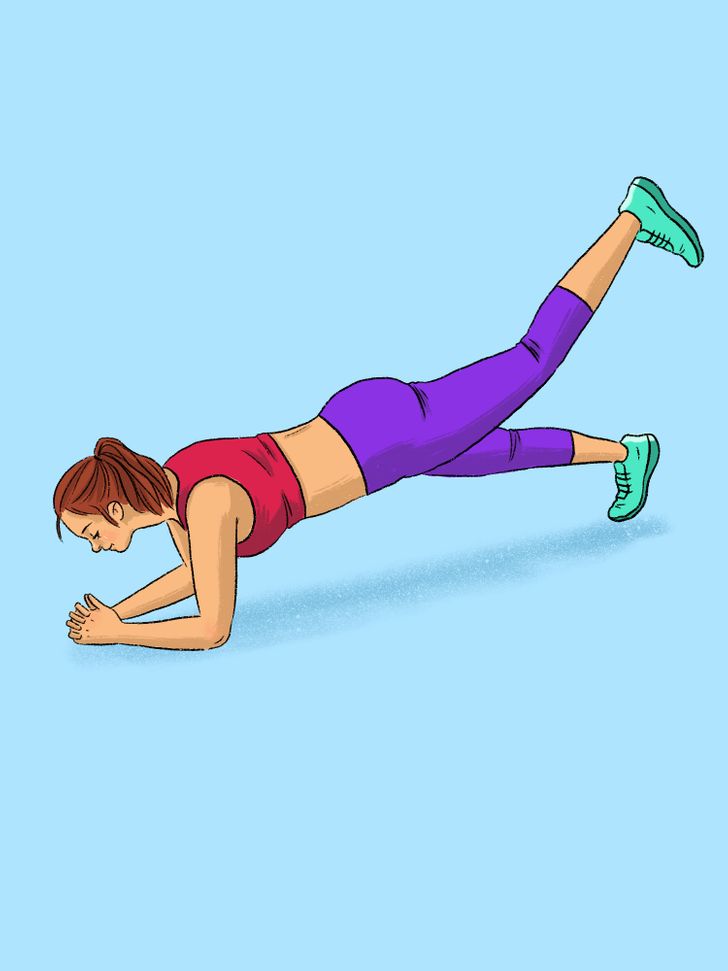
This variant makes the abs, buttocks, and biggest back muscles work really hard.
- The classic plank is your starting position.
- Straighten the leg at the knee, bend the foot, and lift it.
- Touch the floor with your toe and lift your leg again. Change legs.
10. Sliding back and forth
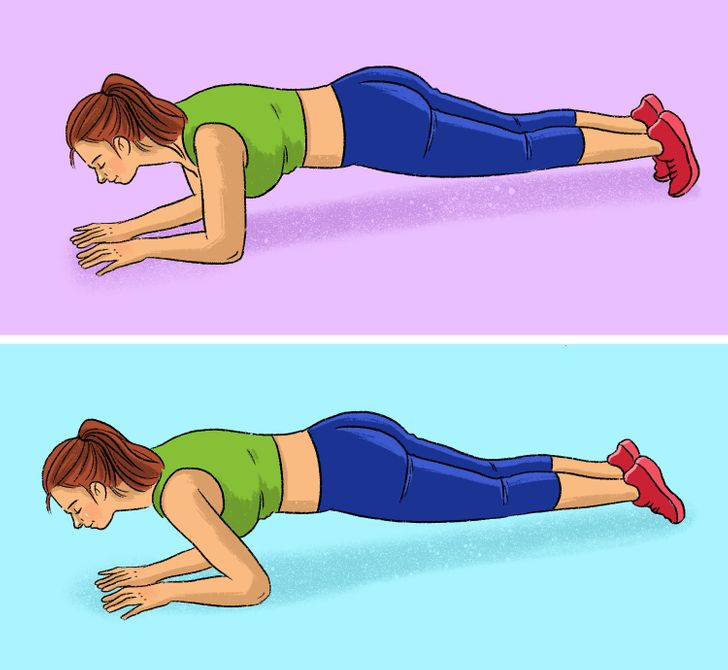
This exercise makes your calves, biceps, and abs much stronger.
- The elbow plank is the starting position.
- Push away with the toes so that the body moves forward, parallel to the floor.
- Return to the starting position. Make sure you control your abs and don’t curve your back.
11. Rotating plank
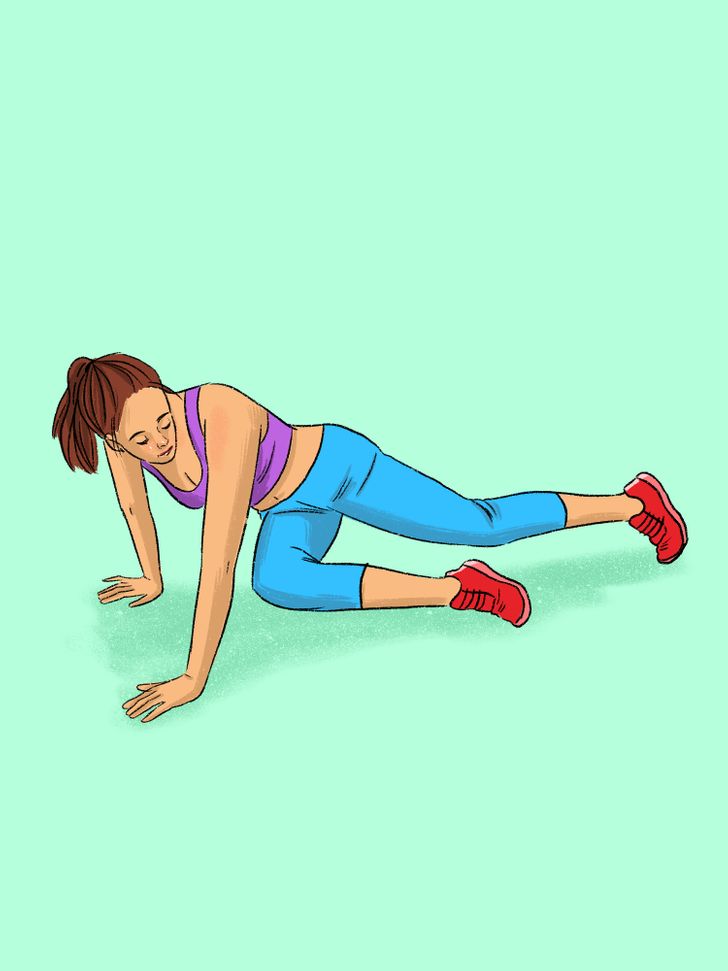
This exercise develops the back muscles and the legs.
- The classic plank is the starting position.
- Rotate the body while moving, trying to touch the left elbow with the right knee.
- Do the same with the left knee and the right elbow.
12. Plank with tension
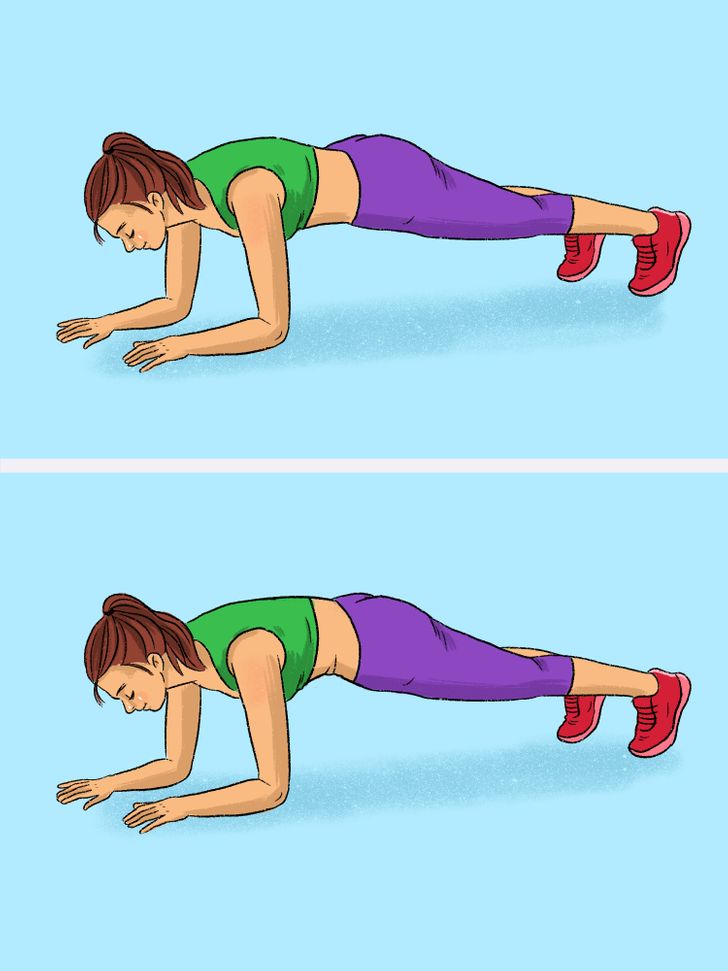
This plank develops your core muscles.
- Elbow plank is the starting position.
- Put your elbows and toes on the floor. Increase the tension in the abs.
- Hold the position for about 10-15 seconds.
Which exercise do you think is the most effective and why?
Comments
may i know the time limit to do any plank pose
Love doing planks. I usually stick to a forearm plank and some variations, but these are really precious.
Thanks
Related Reads
My Boss Tried to Ruin My Christmas Plans—I Got the Last Laugh

I Refused to Be Humiliated in Front of My Own Family

I Refused to Go to Work After a Family Emergency—HR Got Involved

I Refused to Keep My Pregnancy Secret Just Because My Sister Lost Her Baby

15 People Who Didn’t Want a Cat but Were Chosen by Fate Anyway

10 Sassy Comebacks That Silenced Rooms in a Second

12 Stories That Prove Quiet Kindness Survives When All Else Fails

10 Jaw-Dropping Stories Where One Moment Changed Everything

15 True Stories With Mind-Blowing Endings That Could Rival Hollywood

I Got Fired the Day Before My Vacation—And HR’s Policy Was Their Biggest Mistake

18 Stories That Show Kindness Can Be the Strongest Force of All

18 Stories That Prove a Cleaner’s Job Is About More Than Just Dusting
